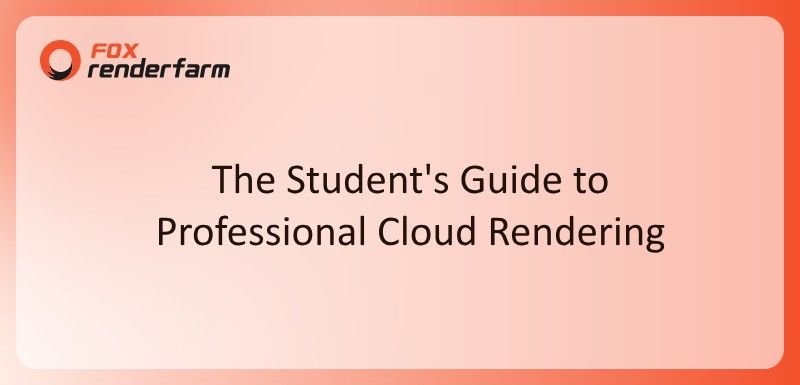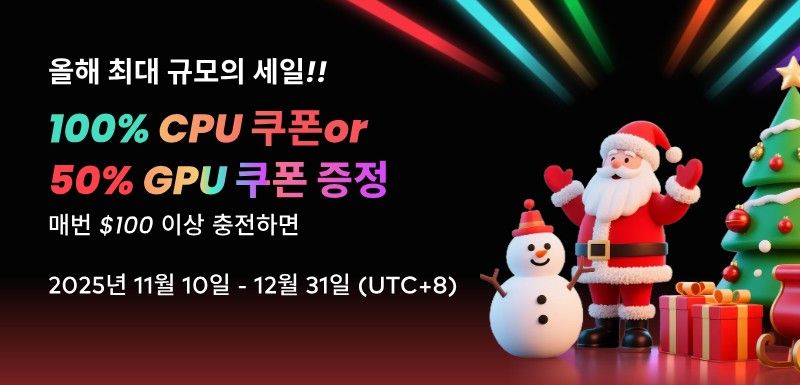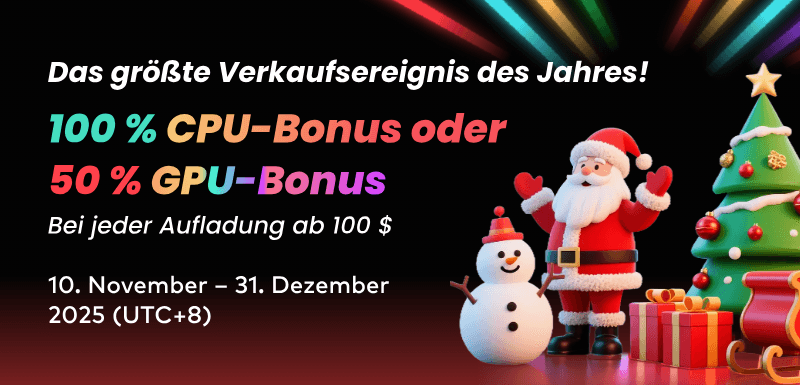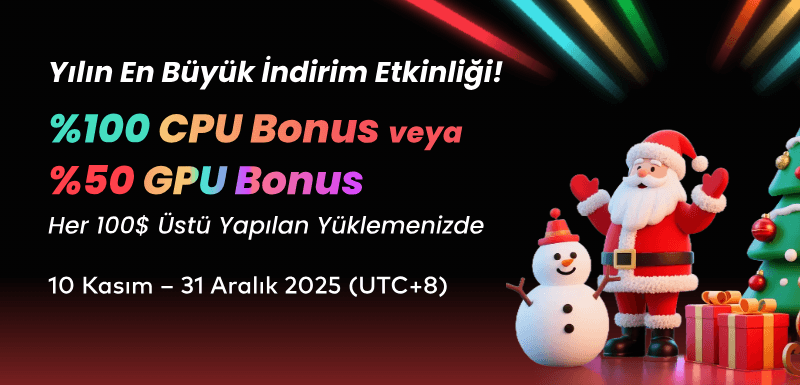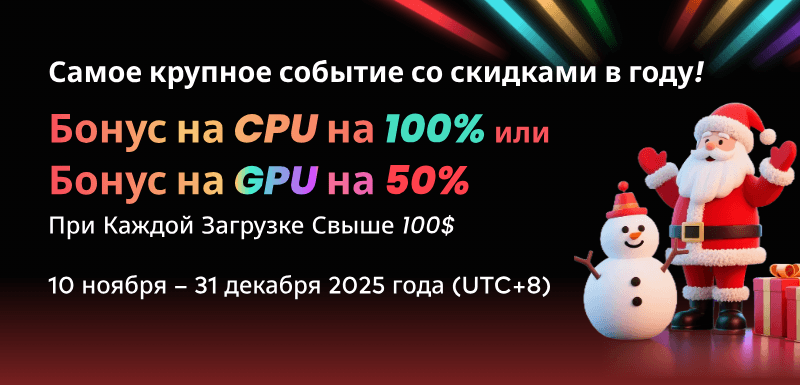Many beginners want to create moving characters and animations but don't know which software is better. This confusion can happen because tools usually look similar or have a complex interface that most people can't navigate. Similarly, some tools are free while others require payment, which adds more questions. That's why people look around for comparisons between tools to see which one is better for them.
Two famous tools in this regard are Blender and Maya, which are widely used across industries to create animations and designs. Hence, this article will explain the Blender 3D vs. Maya comparison in detail and help you make a choice. In addition, we will introduce a powerful online render farm service that you can use with these tools for improved workflows.
Part 1. What are Blender and Maya?
Among the options, Blender is an open-source program that enables users to build and shape digital characters and animations. In addition to being an open-source resource, it is free to use and supports professional animation creations. It comes with tools like sculpting and animating, as well as basic video editing and rendering options. Like most tools, it supports adding extensions for extended features and additional resources.
Continuing the Blender vs. Maya discussion, the latter is a paid software from Autodesk and is used widely across large studios and experienced artists. As compared to its competitors, it has strong tools for building models and adding movements. That's why many films like Avatar and Transformers and games are made using this tool. Furthermore, Maya supports character work and different lighting setups at a higher level.
Part 2. Blender vs. Maya: Comprehensive Comparison
Now that you know the basic introduction of both these animation tools, let’s discuss the differences between Blender and Maya in detail:
1. User Interface and Learning Curve
Blender has a clean layout and huge support platforms with various video tutorials to guide users in operations. The platform has separate workspaces for tasks like sculpting, UV editing, etc. Similarly, it has different tab sections that allow better organization, while the panels make it easier to access various properties. Additionally, the UI is highly customizable through Python scripting and splitting viewports.

In comparison of Blender vs. Autodesk Maya, the latter’s viewport is made according to industry standards and allows navigation through shortcut keys. Its Outliner helps with understanding the workflow by displaying the object hierarchy in the scenes. Furthermore, its Shelves save the tools and commands that are regularly used for quick access. The tool also has a Time Slider, which allows navigation through the timeline, but the tutorials are usually complex.
2. Modeling Tools
Although it is more focused on beginners, Blender offers powerful modeling tools, like Modifiers, to automatically perform different effects. Similarly, UV Unwrapping allows for quick unwrapping of your mesh within the tool and fast use of textures and paints. In addition to cubes and cylinders, it offers different camera projections. Besides, Retopology helps in reducing the polygon count on an HD model while also preserving its structure.
When you compare Autodesk Maya vs. Blender, it has stronger modeling tools, especially directed towards film and game development. Quad Draw and Boolean operations make Polygon modeling easier in this tool. Above all, it has strong support for NURBS and curve modeling to help with film VFX effects. What’s more, the Deformers in this tool help the modeling process by allowing the addition of tensions and shrinkwrapping onto objects.
3. Texturing and Materials
It doesn’t matter much if you choose Maya or Blender, as both offer advanced built-in texturing tools. Blender has the Shader Editor, which lets users build material setups using nodes. This node system can mix colors and patterns and add effects quickly to the targeted animations. As for texturing, it supports procedural textures like Noise and Voronoi, etc., in addition to basic masking and stencils.

Conversely, Maya uses the Hypershade Editor, which is also a node-based material creation feature. The feature also supports Arnold Standard Surface Shader, which produces many types of materials on its own. Furthermore, it relies heavily on external tools like Substance Painter for painting and texturing. While it includes a 3D paint tool and supports procedural texturing, these functionalities are very limited.
4. Animation and Rigging
Both Maya and Blender support advanced animations, with dedicated features for rigging the characters. Starting with Maya, it comes with Auto-Rig Pro and Rigify features for industry-standard rigging. Additionally, the platform allows the creation of custom pose libraries for future rigging purposes. As for animation, it comes with the Graph Editor and Dope Sheet options for hybrid animations. Similarly, basic keyframes and shape animations are quick to make in this powerful tool.

Maya comes with HumanIK and Quick Rig tools that provide a complete character keyframing environment for rigging. Similarly, it comes with AdvancedSkeleton, a group of tools that allow unlimited body configurations. The program has deep animation tools and editors like the Graph Editor and the Dope Sheet for visualizing the concepts. Moreover, it has built-in tools for motion capture, like MotionBuilder for retargeting mocap data.
5. Rendering and Lighting
Since Blender is beginner-friendly, it comes with basic rendering and lighting capabilities yet is still capable of handling complex tasks. It has a system called Cycles for realistic lights and shadows, while its Eevee system is useful for fast previews. Plus, it supports HDRI and light probes to control the lighting in animations. Similarly, users can enhance the platform's rendering capabilities by using the services of platforms like Fox Renderfarm.

When comparing Blender 3D vs. Maya, the latter uses the Arnold render engine for ray tracing and supports outside engines, like RenderMan. These options allow better control of overshadows and light colors in complex animations. As for lighting, it comes with physical light types and IES profiles that can create realistic effects. You can adjust the render settings with AOV controls and utilize the AI denoising feature for a polished look.
6. Cost Considerations
The good thing about Blender is that it is completely free of cost and provides regular updates without worrying about costs. Since anyone can access its features without paying a penny, it is widely used by new artists and beginners. Similarly, it is completely open-source, and the features are free for commercial usage. Moreover, the tool offers thousands of free or cheaper community add-ons for additional features.
However, as Maya is designed for complex commercial usage, it works on a premium pricing model and costs $255 per month. It also requires a paid license, even for individual use or small studios. Yet, it helps students by providing access to its tools at a discounted price. In short, Blender and Maya both offer many free add-ons, but the paid extensions for Maya are more expensive.
7. Community and Support
Blender has a huge community of users around the world who not only create tutorials and add-ons but also guide others through forums. Different blogging sites and YouTube channels provide tutorials for both beginners and advanced animation enthusiasts. Furthermore, its official Blender Studio training and extensive documentation help users understand its core features.
Comparing the support of Autodesk Maya vs. Blender, users primarily get help from the platform's official team since it is a paid tool. While its tutorials are not as abundant, the community support is still enough to guide beginners properly. In addition, it has detailed documentation that guides its usage from personal to commercial usage.
Pro Tip for 3D Artists: Improve Animation Rendering Efficiency
Now that you are done choosing your desired animation program from Maya and Blender, let's discuss an additional solution that can make your work easier. While these software are optimized for best performance, they still need lots of resources that can slow down your system. Hence, Fox Renderfarm is recommended as the render farm service that takes away the load from your system and renders animations online.

This cloud rendering service allows you to render your small animations on its CPU-powered servers while complex designs on GPU-focused servers. Furthermore, it shoots thousands of rendering nodes at the targeted animation to instantly stream it on the screen. Apart from that, the platform is also highly focused on user safety and is ISO27001 certified. The platform rewards new users with a $25 reward to experiment with its services.
Key Features
- Transmission Speed: The tool relies on RaySync’s advanced transmission technology, which means you can upload your files at a quick speed. Upon uploading and rendering the animations, the same technology helps with downloading them quickly.
- SSD Storage: The servers use SSD storage, which ensures the animation files are moved around without any delays. Hence, the delays that occur while giving inputs or receiving outputs go away.
- System Support: Apart from the web, Fox Renderfarm is accessible through desktop clients on all major operating systems. So, you can access it on your Windows, Mac, and Linux systems through the dedicated programs.
- Compatibility: Fox Renderfarm’s services are compatible with all the major animation programs to assist with the rendering process. Furthermore, the service is compatible with the most famous animation plugins and doesn’t disturb their functionality.
- API Integration: Industries and studios can make it a part of their production pipeline using its API keys. That way, it becomes easier for them to render their 3D artworks while also saving money on unnecessary upgrades.
Part 3. How to Make the Right Choice Between Blender and Maya?
As the detailed Blender vs. Autodesk Maya comparison has highlighted the differences, you should be able to choose one for yourself by now. In summary, Blender is the better choice if you're just starting the journey and don't want to spend much on resources. In contrast, if you want to work in large studios and want to create complex projects, Maya might suit you better.

Conclusion
To conclude, while both Blender and Maya are powerful tools, each serves different users. Blender is free and ideal for people working on small projects. Conversely, Maya is more powerful and is recommended for studio-level works.
So, the Blender 3D vs. Maya comparison showcases how the former is for basic usage while the latter helps with complex tasks. Moreover, complementing them with Fox Renderfarm improves the workflow significantly.







